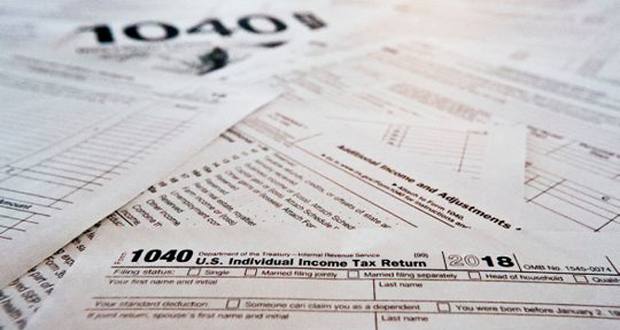When Republicans transformed America’s broken tax code for the first time in three decades, then-Democratic Leader Nancy Pelosi famously predicted “this is Armageddon” for the nation’s economy.
Barely a year later, how things have changed.
Blue-collar employment has surged, low-income workers are experiencing the highest wage growth in nearly a decade, median household income surged past $61,000 for the first time since 1999, and Americans are at a near-high record of optimism about their personal finances.
New business startups are skyrocketing, U.S. manufacturers had their best year since 1997 and the economy grew almost 50 percent faster in 2018 than President Obama’s economists predicted as the “new normal.”
Democrats couldn’t have been more wrong, thank goodness. (Did we mention the record 7.3 million job openings in America?)
Now the economic deniers are back at it. This time peddling the scary elixir that “lower tax refunds mean higher taxes.”
Wrong again.
Never mind that the size of average tax refunds varies from year to year in the U.S. – Morgan Stanley estimates total refunds will actually increase this year by 26 percent, or $62 billion.
Set aside that the Treasury data is merely the first few weeks of a very unusual tax season due to the partial government shutdown. And ignore the important fact that refunds which include tax credits from earned income and additional child credits aren’t reflected in these initial reports.
This claim about refunds, as the Washington Post’s fact checker observed, is “nonsensical and misleading.”
They were describing Democratic presidential candidate Sen. Kamala Harris’ tweet, in which she purported that the size of the average tax refund is slightly down from last year, calling Republican’s tax cuts a “middle-class tax hike.” She earned four Pinocchios for such a bizarre claim.
Refunds are lower because taxes are lower
Here are the straight facts.
The size of your tax refund has nothing to do with your overall tax bill. It merely reflects what you overpaid the IRS in your paychecks last year.
For most Americans, the Tax Cuts and Jobs Act delivered larger paychecks starting last February, even if many workers didn’t notice. The liberal Tax Policy Center confirms that 90 percent of middle-class Americans will receive a tax cut.
Since many workers and families live paycheck-to-paycheck, getting at least some of their tax cut in advance, rather than delaying it a year, is a life saver.
A larger paycheck throughout the year is especially important for that family of two teachers and two kids in Texas who — thanks to the GOP tax cuts — keep $2,636 more of their earnings each year to help pay utilities, the truck payment, or save for college.
It’s equally crucial for the single mom with two kids in Iowa who doesn’t pay a dime in federal income taxes on the first $53,000 of her hard-earned money. That means more money for groceries and getting her kids into the sports they love. And more money that can go to the credit card bill, which means less interest paid to the credit card company.
You get to control your money. Not the IRS.
Thanks to the tax cuts, led by President Trump, the Child Tax Credit is doubled and available to millions more parents, the standard deduction nearly doubled, tax rates were lowered at every income level, and over 90 percent of Americans will be able to use the simplest available tax form — without the hassle of itemizing.
How did that happen? Because three out of every four dollars in tax cuts went directly to individuals and small businesses, according to the Congressional Budget Office.
The easiest way to see for yourself is to compare your paychecks mid-year to your paychecks the year prior. Or simply look up your tax form from last year and compare to this season.
If your refund looks off, check your withholding exemptions at work. These withholding tables were updated early last year by the IRS following tax reform. Adjusting your withholding can help individuals decide if they want more in each paycheck or to receive a larger refund in the next year as taxes are filed.
It’s your call. And, thanks to the GOP, it’s your money.
– By Chuck Grassley and Kevin Brady
